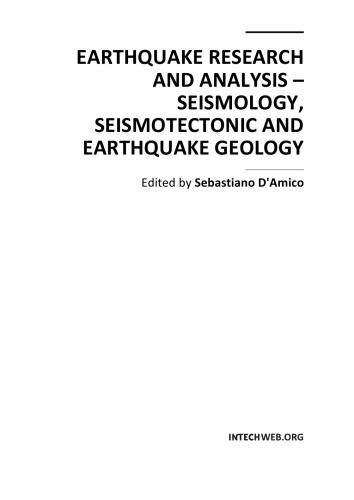[GIS Book/PDF] Integrated morphometric analysis in GIS environment applied to active tectonic areas
Description
This chapter describes a methodology for identifying the structural lineaments in active tectonic areas by integrating morphological and morphometrical data derived by DEMs (Digital Elevation Models) processing, with local seismicity data. Moreover, validation of the lineaments extracted from DEM has been carried out by examining literature geological and geomorphological data, aerial photo interpretation and field surveys. The morphometric parameters as the terrain slope, terrain aspect, profile curvature, tangential curvature and topographic residual surface have been chosen for identifying the linear continuity of the morphostructural features observed on the DEM. The criteria of lineament extraction is based on the identification of linear topographic surface features, such as valleys, ridges, breaks in slope, boundaries of elevated areas aligned in a rectilinear or slightly curvilinear shape and that distinctly differ from the patterns of adjacent features. The areas selected for testing our methodology are the Agri Valley (Campania-Lucania regions), hit by the strong historical earthquake of December 26, 1857 (Imax=XI, Me=7.0); the Sannio area (Campania-Molise regions), affected in historical time by the strong earthquake of June 5, 1688 (Imax=XI, Me=6.7) and in recent time by seismic sequences of moderate energy; the Campi Flegrei volcanic district (Campania region Thyrrenian coast), characterized in the past decades by major bradyseismic crises with remarkable ground uplift and intense seismic activity, and recently by minor crises with lower deformation (Fig.1). Fig.1: Strong earthquakes in the Southern Apennines (square in red) from CPTI04 catalogue: 1688 earthquake (Imax=XI, Me=6.6), Agri Valley earthquake (Imax=XI, Me=7.0, CPTI, 1999) and Campi Flegrei Volcanic (in orange). Particulary, the Agri Valley and the Sannio area are active tectonic areas located inside the Southern Apennines chain of Italy and characterized by a complex inherited tectonic setting, low-tectonic deformation rates that hide the seismogenic sources geometry, and youthfulness of the sources. Whereas the morphotectonic features of the Campi Flegrei caldera resulted from the combined action of both volcanism and regional tectonics, mainly correlated with a circular geometry of deformation, and NW-SE, NE-SW normal faults. As regards all the above studied areas, due to the difficulty or not straightforward recognition of the induced surface deformation, besides the lack of recent field structural data, the operation of the GIS system has enabled us to process and generate some original informative layers, through image analysis, such as new structural lineaments. The synthesis of the main results has consisted in structural thematic maps of the new lineaments, which has been the final result of our application, representing a contribution to new knowledge about the potential active faults of the investigated areas, for the assessment of local geological-environmental hazard parameters.
Book Info

Author(s): D'Amico, Sebastiano; Department of Physics, University of Malta, Msida, Malta; Nappi, R.; Istituto Nazionale di Geofisica e Vulcanologia, Sezione OV, Napoli, Italia; Alessio, G.; Istituto Nazionale di Geofisica e Vulcanologia, Sezione OV, Napoli, Italia
Publisher: INTECH Open Access Publisher , Year: 2012
ISBN: 978-953-307-991-2
Download
Join the group as followed to get more info.
Join Group
Due to copyright or some other issues, the resources you currently see may not be available, for more information, such as purchase, lease, second-hand transfer or other method, you can join our Telegram group, many other GIS tips would be shared here.
Telegram: Join GIS Hub Group
comments powered by Disqus